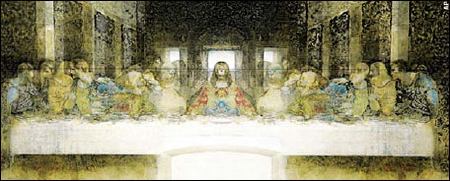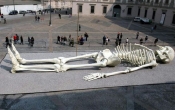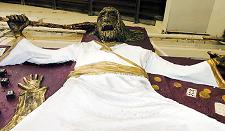Underwater Basket Weaving —
I can't remember why I searched for "Underwater Basket Weaving" on wikipedia, but when I did I was surprised to discover that it's a real craft. I had frequently heard the phrase used in college as a joke to mean an easy class, and it always made me imagine people submerged in a swimming pool trying to weave a basket. I never thought it was something real. But turns out it is real.
Wikipedia defines it as:
a process of making wicker baskets which involves dipping reeds or stalks of plants into (or, as the name suggests, under) water and allowing them to soak. This process will provide a very supple and flexible reed which can then be woven into a basket given enough time. The baskets then will be allowed to dry and provide a sturdy container.
I'm assuming that Wikipedia's definition is correct. After all, it sounds reasonable. But it made me wonder how the term came to mean an easy class, and whether any colleges actually offer Underwater Basket Weaving.
The second question is the easiest to answer, since the Wikipedia article also states that: "The University of California, San Diego's recreation department first offered an underwater basket-weaving class in 1984. Saint Joseph's College in Indiana offers this class as well."
I want to verify that UCSD and St. Joseph's actually do offer such a course. But assuming they do, do any other colleges offer it? I'm not sure. All I can say is that I've never seen it listed in any college catalog. (Wikipedia links to an
Underwater Basket Weaving syllabus supposedly offered by the University of Portsmouth, but the syllabus reads like a joke, so I'm guessing it is a joke.)
The earliest reference to the term that I could find, searching on
Newspaper Archive, was May 9, 1960. The author of a
Pasadena Independent trivia column noted that "Son Herbert reports that underwater basket weaving is all the rage among college students who want to spare the brain cells." So evidently the joke had been well established by 1960. I would guess the origin of the term dates to the late 1950s. Did the joke start after a college actually began offering this course? I don't know, but it seems possible.

 Elliot's newest contribution in the Hoaxipedia is an entry about the career of the art forger Elmer de Hory.
Elliot's newest contribution in the Hoaxipedia is an entry about the career of the art forger Elmer de Hory.  This has nothing to do with hoaxes, but I thought it was interesting, so I'm posting about it anyway. Also, it reminded me of the Compliment Machine, which I posted about just a few days ago.
This has nothing to do with hoaxes, but I thought it was interesting, so I'm posting about it anyway. Also, it reminded me of the Compliment Machine, which I posted about just a few days ago.
 No form of deception is more ubiquitous in modern life than the cheery platitudes we constantly exchange: "How are you?" "Fine!" or "Have a nice day."
No form of deception is more ubiquitous in modern life than the cheery platitudes we constantly exchange: "How are you?" "Fine!" or "Have a nice day."

 This website shows a ‘dead fairy’, along with the story of how it was found in the Derbyshire countryside. It claims that the police and a local ‘paranormal expert’ had examined the fairy, and that the barrow it was found in contained over 20 bodies.
This website shows a ‘dead fairy’, along with the story of how it was found in the Derbyshire countryside. It claims that the police and a local ‘paranormal expert’ had examined the fairy, and that the barrow it was found in contained over 20 bodies. 
 Pac-Man Hits The Road
Pac-Man Hits The Road The floor of this elevator, in Taiwan, is painted to look as if there is no floor, just the lift shaft.
The floor of this elevator, in Taiwan, is painted to look as if there is no floor, just the lift shaft. Banyan Tree Gets Police Protection
Banyan Tree Gets Police Protection








